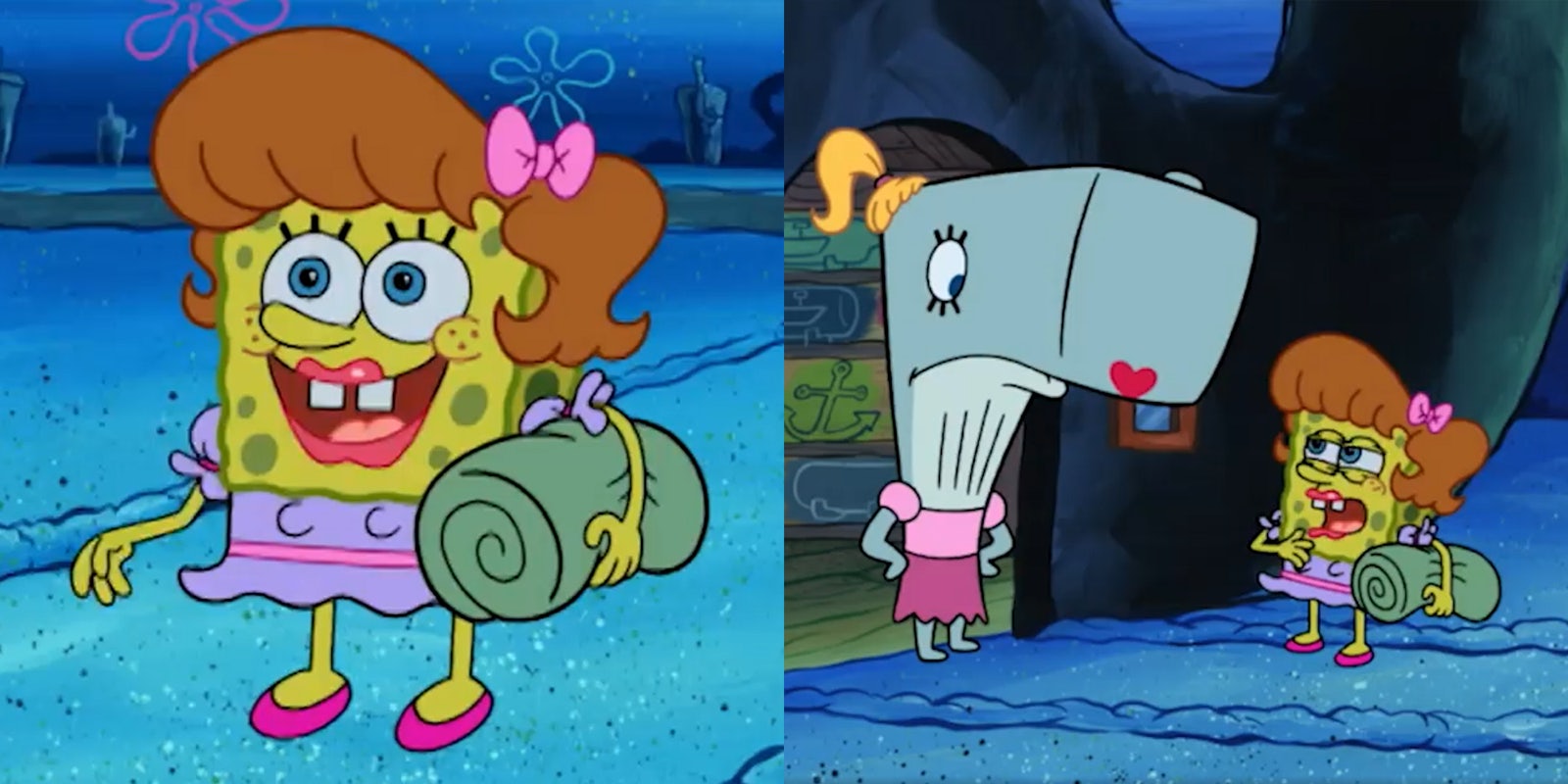Problematic on TikTok is a weekly column that unpacks the troubling trends that are emerging on the popular platform and runs on Tuesdays in the Daily Dot’s web_crawlr newsletter. If you want to get this column a day before we publish it, subscribe to web_crawlr, where you’ll get the daily scoop of internet culture delivered straight to your inbox.
Analysis
TikTok’s latest trend inspired by a Spongebob Squarepantsaudio seems innocent enough. The gag follows the same structure as it did in the cartoon: a man dressed in women’s clothes lip syncs Spongebob, who says he’s “here for the slumber party.” A woman (or women) respond, lip syncing Pearl Krabs’ part, saying “do I know you?”
“My name is, um, girly teen girl,” Spongebob says. “I just moved here from Far Awayville.”
Pearl cuts in and says “I know it’s you, Spongebob Squarepants!”
Both the cartoon and trend include Spongebob or a man, respectively, dressed up as a woman, usually wearing a dress, makeup, and heels. The joke is that the man dressed as a woman is obviously not a woman.
However, a man dressed in women’s clothing being the butt of a joke is actually a transphobic trope: Seeing men dressed up as women for comedic effect (or, as part of a scary movie) can make people think that transwomen are simply men in dresses.
Although the trope has always been present in media, discussions of its harmfulness resumed when Tootsieand Mrs. Doubtfire, two movies whose entire comedic storylines are based on men wearing women’s clothing and deceiving people into thinking they’re women, were adapted as Broadway shows last year.
In his piece “The Gender Problem ‘Tootsie’ Can’t Dress Up,” Christian Lewis, a writer for American Theatre, explains that media that doesn’t include transgender characters can still be transphobic.
“Although there are no trans characters in the musical, trans people are the butt of every joke, a silent specter of mockery,” Lewis writes. “As the whole musical revolves around a never-ending ‘man in a dress’ gag, a trope that’s rooted in transmisogyny (hatred of trans women).”
And though this Spongebob TikTok trend is no Broadway show or an 80s Dustin Hoffman movie, it has the same effect. Spongebob isn’t pretending to be trans in the clip that inspired the trend, he’s simply a male (sponge) in a dress for laughs. But the effect of his ruse is transphobic—as are the tens of thousands of TikTok videos of men in dresses and/or makeup doing the trend.
Why it matters
The “man in a dress” trope is harmful because it turns the existence of trans people, especially trans women, into a joke.
In a post in a subreddit about and for trans people, a trans woman wrote exactly that: “I know how this trope makes me feel. It makes me feel like I’m being turned into a joke.” She goes on to say that the trope is further harmful because it could spawn transphobic beliefs, too.
Unfortunately, because “boys be like versus girls be like” humor still reigns supremely in parts of TikTok, I don’t think trends that involve men in dresses and makeup—or even a towel on their head to denote femininity—will die down anytime soon. But in an ideal world, people would be thinking before they post.


